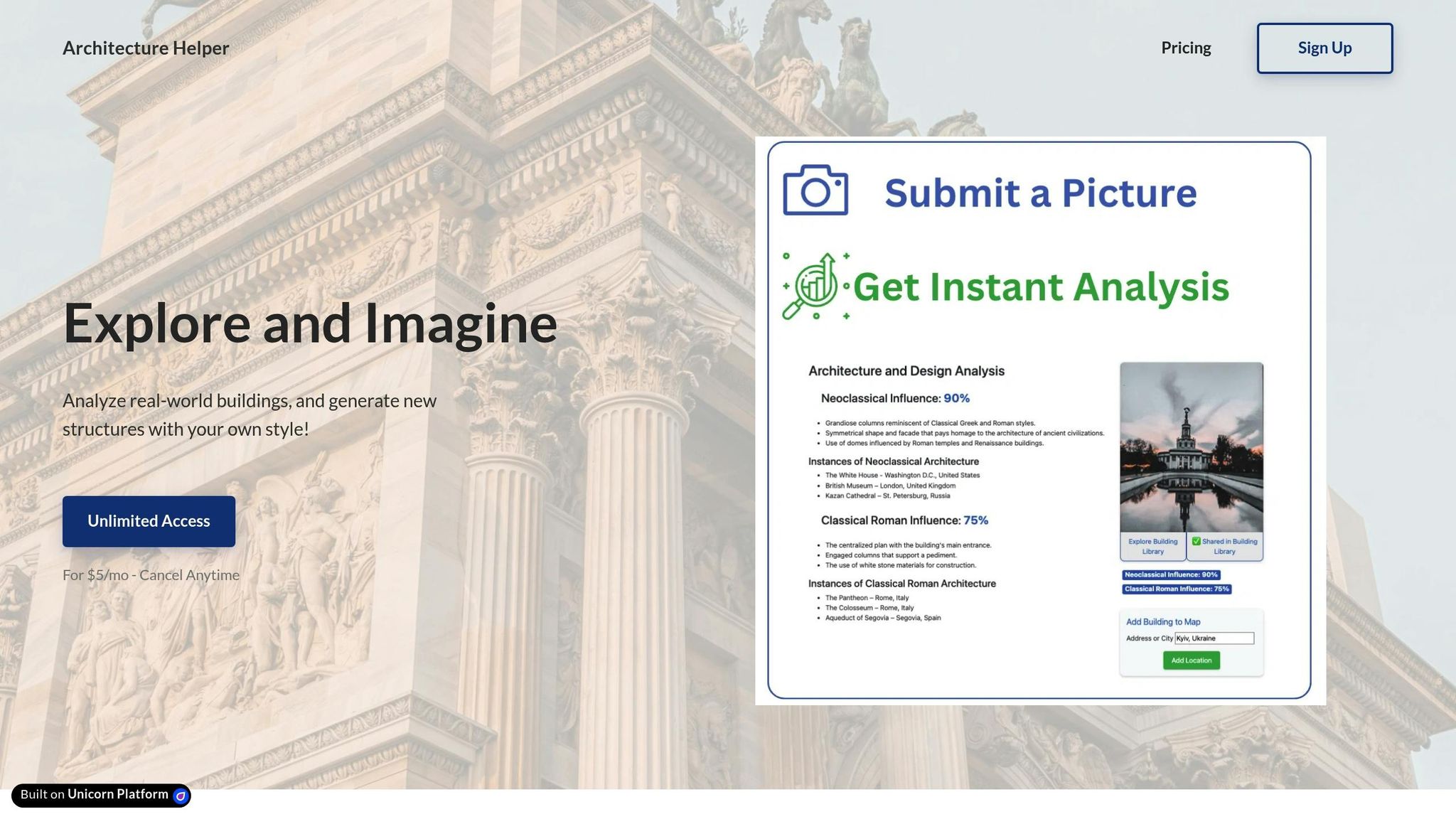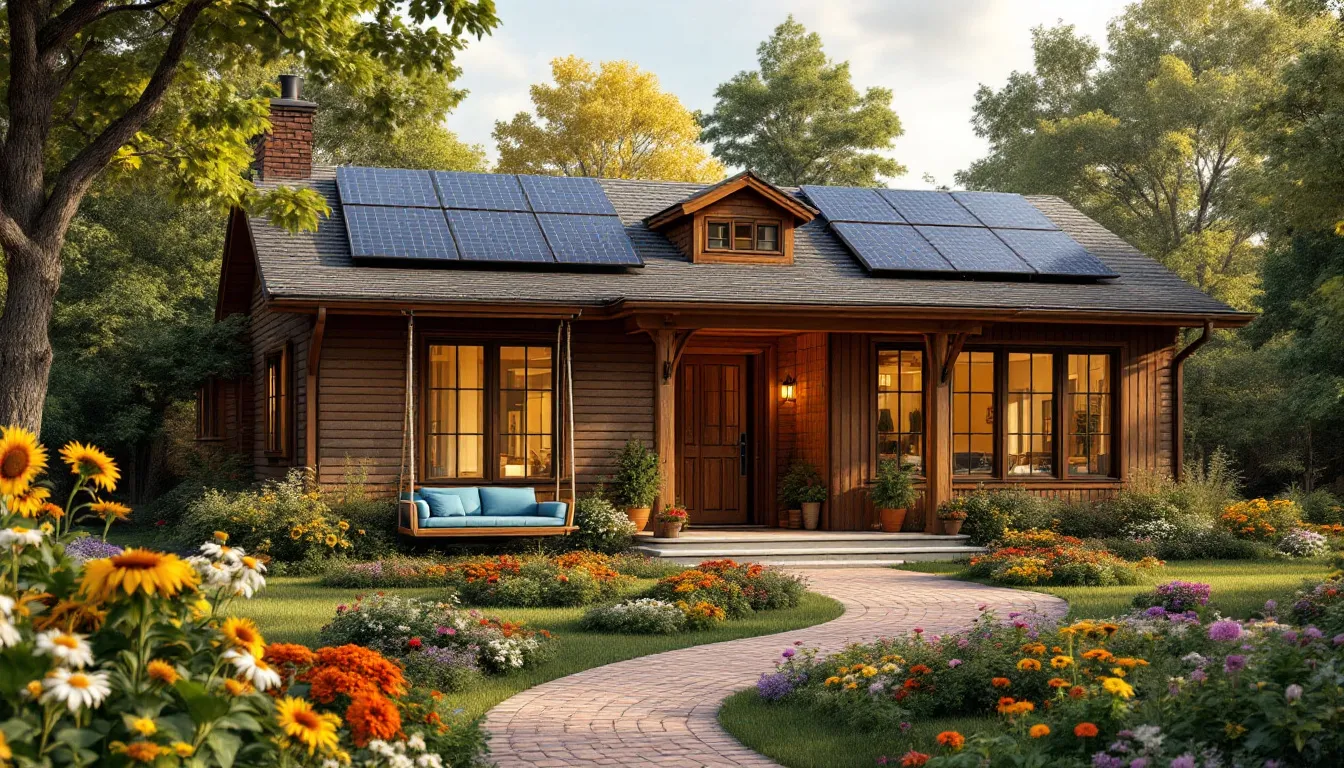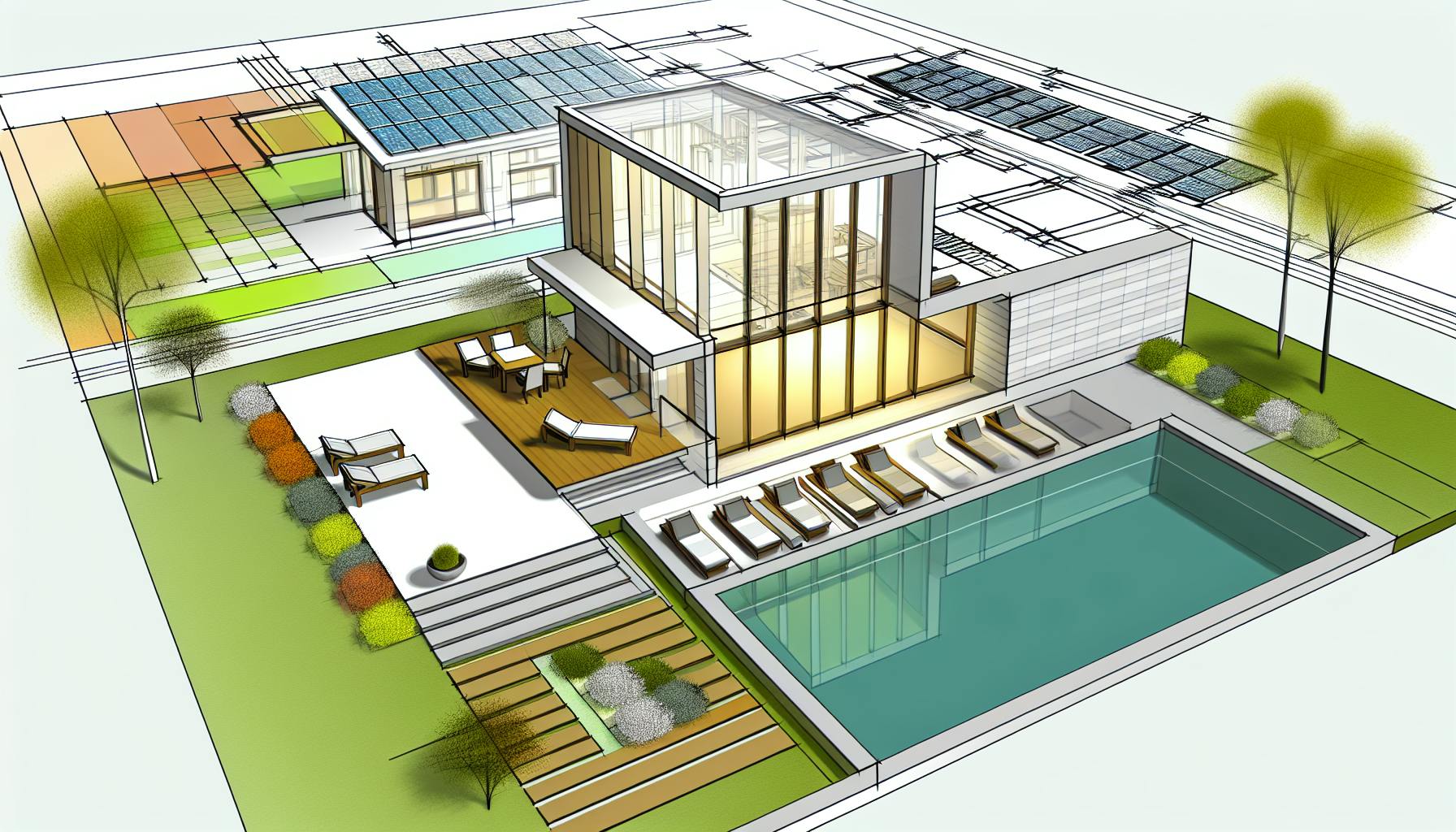Mediterranean architecture is a blend of styles shaped by centuries of trade, conquest, and cultural exchange. Its iconic features - like arched openings, terracotta roofs, and interior courtyards - combine practicality with timeless design. Key influences include:
- Thick stone walls for insulation and durability.
- White or earth-toned exteriors to reflect sunlight.
- Wrought iron details on windows and balconies for security and style.
- Interior courtyards for natural ventilation and communal living.
This style evolved through interactions between Islamic, Byzantine, Roman, and Renaissance traditions. For example, Islamic horseshoe arches and intricate tiles merged with Roman domes and Renaissance symmetry, creating unique regional variations. Port cities like Venice and Alexandria became hubs where these ideas mixed, resulting in structures like the Great Mosque of Córdoba or the Norman Palace in Palermo.
Today, Mediterranean architecture is being adapted for modern needs, using traditional methods like lime plasters alongside innovations like solar-friendly atriums and energy-efficient designs. It offers a sustainable approach while preserving its historical roots.
Islamic Influence on Art and Architecture of the Mediterranean ...
Origins and Development
During the Renaissance (c. 1400–1600), architecture in the Mediterranean region took a major turn as architects revisited classical ideas with a more scientific mindset. One standout example is Filippo Brunelleschi's dome for Florence Cathedral (1436). Its double-shell structure combined Roman engineering techniques with new Renaissance approaches, reshaping how domes were built and setting new benchmarks for future designs.
These Renaissance advancements paved the way for further experimentation. In the Baroque period (c. 1600–1750), architects introduced bold design elements that emphasized movement and dramatic visuals. This included facades designed to captivate, curved walls that improved spatial flow, and trompe l'oeil techniques that created illusions of larger spaces. These innovations turned buildings into vivid expressions of creativity, leaving a lasting impact on Mediterranean architecture that can still be seen today.
sbb-itb-1be9014
Trade Routes and Building Methods
The evolution of trade routes had a major impact on Mediterranean building techniques. Between 800–1500 CE, the Mediterranean Sea acted as a critical hub, not just for goods but also for architectural ideas. Merchant ships carried innovative design concepts across the region, leading to a mix of construction methods that defined the area's architectural identity.
Port Cities as Design Hubs
Key Mediterranean port cities became melting pots where different architectural traditions came together. Venice, for example, developed a style that combined Byzantine, Islamic, and Gothic elements. A great example is the Doge's Palace (1340–1442), with its pink Verona marble facade that reflects this blend.
In Alexandria, Persian and Arabian influences shaped building designs. Cooling features like malqaf towers and mashrabiya screens were incorporated into local architecture to address the region's hot climate.
During the Crusader era (1104–1291), builders in the Levant used local limestone alongside imported Italian marble, merging European and Middle Eastern styles.
Blended Architectural Styles
Some buildings from this period stand out for their mix of regional influences. The Great Mosque of Córdoba (785–988 CE) is a perfect example of cultural fusion. Its double-tiered arches showcase Roman engineering paired with Islamic decorative elements, while its prayer hall features mosaics inspired by Byzantine art.
The Palazzo Ducale in Genoa, rebuilt in 1298, reflects the city's commercial success. Its facade combines Ligurian black-and-white striped marble with Gothic-style windows, highlighting connections to European and North African trade routes.
The Norman Palace in Palermo (1130–1140) is another striking example. It incorporates Norman military design, Islamic muqarnas, Byzantine mosaics, and local stonework, creating a truly multifaceted structure.
These blended styles weren't just aesthetic; they were practical solutions tailored to local climates and cultural needs. This successful merging of influences gave rise to the distinct architectural character we associate with the Mediterranean today.
Current Uses and Updates
Mediterranean design, rooted in centuries of exchange and tradition, is now being reimagined to address modern environmental needs. By blending time-tested techniques with today’s technology, this approach creates solutions that are both practical and respectful of its origins.
Preserving Traditional Methods
Historic building methods are making a comeback, adapted to meet today’s construction standards. Lime-based plasters, for example, are being preserved and paired with modern moisture control systems. Specialized training programs are teaching new generations of craftsmen how to restore old structures and use these methods in new builds. This ensures these time-honored techniques continue to play a role in modern construction.
Practical Design Innovations
Elements like thick stone walls, known for their ability to regulate indoor temperatures, inspire modern double-wall systems that reduce reliance on mechanical heating and cooling. Traditional courtyards are being reimagined as solar-friendly atriums, boosting natural light while cutting energy usage. Even ventilation strategies from the past have influenced energy-efficient smart windows. These updates bring Mediterranean principles into the future of sustainable design.
Modern Mediterranean Architecture
New projects are blending classic Mediterranean features - like arched windows, courtyards, and natural materials - with advanced climate control systems. This combination respects the architectural heritage while addressing today’s need for energy efficiency and sustainability.
Summary and Tools
Mediterranean architecture has left a lasting mark by blending practical design with aesthetic appeal, shaped through centuries of cultural interaction. Its principles emphasize natural temperature control and effective use of local materials, offering lessons that continue to influence modern sustainable design. Today, modern tools help integrate these time-tested ideas with contemporary architectural needs.
Using Architecture Helper for Mediterranean Designs

Architecture Helper offers tools to explore and apply Mediterranean architectural features in modern projects. The platform allows users to study existing structures and experiment with blending traditional Mediterranean elements into modern designs. Key features include:
- Analyzing courtyard layouts to understand ventilation patterns
- Studying how window placement affects airflow and lighting
- Evaluating traditional materials and structural techniques for modern use
The platform also includes a rich library that showcases how Mediterranean design evolved across different regions through cultural exchange. For $50 per year, users get unlimited access to these tools and resources, making it easier to analyze and apply Mediterranean design concepts.
This approach bridges historical knowledge with modern architecture, helping designers create buildings that respect cultural heritage while meeting today’s sustainability goals. By focusing on core Mediterranean principles, Architecture Helper ensures that traditional wisdom remains relevant in modern design.


